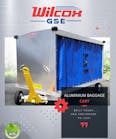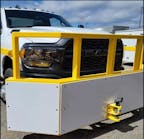By David Mittleman, VP sales and marketing, Determan Brownie Inc.
What is my return on my investment? How long will the equipment last? Should I go with the latest technology? Am I choosing a manufacturer that is reputable and will be around to support the equipment? These are the four most common questions buyers are asking today. The aviation refueling world has been experimenting with different technologies which have been utilized in other industries. One would think that because technology has been successful in other industries that it will be successful in the aviation industry. A lack of good information might lead to a costly mistake.
Today’s buyers are asking more questions. They are much more informed then they have been in the past. They are asking good questions up front and learning more from experts as they go through the buying process. The most important decision is whether the newest technology is the best for their operations.
New technology: advantages and drawbacks
New technology today means electronic meters, remote tank content measuring, wireless data transfer, diesel particulate filters, urea injections, and so much more. Each of the new technologies means different procedures for the operations at an airport.
The most commonly talked about and used technology in the industry for refuelers, cabinets and skids has been the use of electronic registers. While there are many advantages in using this technology, there are also some downfalls. The major drawback will come when you talk with the maintenance people. They are not able to fix the registers like they can on the mechanical registers. While many buyers struggle with this decision, the most reliable option today still is the mechanical registers.
For convenience and improved operations efficiency, some operators are employing electronic tank measuring systems and displays. These systems can communicate with the dispatchers to improve decisions and allow the operator to know instantly if they have enough fuel for the next transaction, reducing miles traveled and time spent. Several technologies are being used to measure and communicate tank content information.
Wireless communication systems that transmit transaction data in real-time such as type and quantity of fuel, truck and aircraft identification numbers, fueling technician identification, time of day, additive injection success/amount, and more allow the fueling information to be transferred to the office instantly. These same systems allow the dispatcher to communicate to the fueler more efficiently and eliminate dispatch errors.
The chassis has been the biggest change for the aviation industry. Many of the options we used to have for chassis with different GVW classifications and configurations from the factories are not available today. Thus, the manufacturers have fewer choices than they did even a few years ago. The two key items are sufficient GVWs and the new engines.
It is critical that buyers make sure to insist on proof that the manufacturer purchases a chassis that meets the weight of the refueler’s body. Because there are fewer choices of chassis options on GVW ratings, the costs are more drastic than they used to be. Paying more up front may be able to save problems in the future.
The government has imposed more stringent emission laws on chassis in the United States, which have introduced diesel particulate filters (DPFs) to the exhaust system as one technology to control emissions. The DPFs are meant to burn the soot at a high temperature so there are less emissions. The chassis manufacturers built these DPFs so they would automatically regenerate at speeds of over 50 miles per hour. Because refuelers typically are speed-governed at an airport, the regenerating becomes manual. Depending on the use of the refueler, this could mean up to a daily procedural change. In fact, there is law being discussed today that makes this a requirement in California. Other states are looking closely at this. Additionally, regenerating while parked introduces safety concerns that are not present while the vehicle is in motion. This is part of our future, and a technology we will be forced to adapt.
Collaboration in the purchase process
Today’s buyers have to get their fueling personnel, their maintenance personnel and their computer personnel involved in the buying process. Not asking the right decisions up front can lead to much more costly mistakes in the future.





